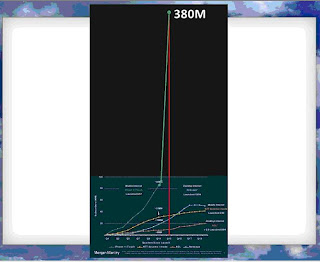I sat through a highly thought provoking talk last week by Craig Rispin, a self acknowledged ‘futurist' (apparently there are 25,000 of them around the world).
Along with a pile of interesting insights into where current research is going (did you know that the Chinese have developed a way to store data in E.Coli bacteria, and that one gram could store as much as 90gb of data?), I was particularly struck by the research data he has sourced from Morgan Stanley on the inexorable and stunning rise of mobile internet use take up.
I have blogged before on how mobile access of the internet is already greater than any other form of internet access. This research shows graphically what this looks like.
The first image shows the 15 million units of iPads (blue) shipped in the first three quarters after launch, compared to the 3 million iPhones (orange) and the 100,000 iPods (green) .
But what have all these iPads been used for?
One answer is connecting to the internet. The following graph shows in green the take up by subscribers (120 million of them) of mobile internet via iPad, iPhone and iTouch after 13 quarters of launch of the service, compared to the equivalent time after the launch of AOL internet in red or Netscape internet in blue.
But look at the same graph after 14 quarters (380 million subscribers)
And 15 quarters (468 million subscribers)

It is the relative take up of the technology which is so stunning, and which is going to have such an impact on how museums harness this new level of connectivity. Of particular interest to me is the opportunities that iPads are going to provide in terms of allowing shared access to information between visitors, particularly families – something a smartphone struggles with due to the small size of the screen. But more of that later.
Julian Bickersteth
Managing Director
internationalconservationservices







No comments:
Post a Comment